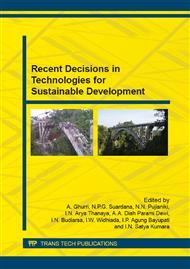p.413
p.419
p.425
p.431
p.437
p.443
p.449
p.455
p.461
Study on Solar Generating Apparatus for Solving Problem of Shadow
Abstract:
As we secure sufficient space to distribute power generation equipment of solar energy, there will be no shaded area, but for the limited space, we can find temporaryshaded area surely for a few moments or a few hours .For the fixed type which are used to most roof solar power plant, side beam is projected for certain period of time before and after sunset, it would be affected to electric generation efficiency, so we researched to solve this phenomena using concave and convex mirror. For basic principle, when module is positioned at shaded area and time, it can deliver to be spread toward module to be accumulatedsunshine with concave mirror and reflected with convex mirror. For net energy which is obtained from sunlight, it produced 223W/day and it produced 207W/dayusing reflect mirror, we can get result which we can get similar amount of power energy only with reflect mirror.It shows that the production by direct light has increase of 8% more than production by reflected light.
Info:
Periodical:
Pages:
449-454
Citation:
Online since:
July 2015
Authors:
Keywords:
Price:
Сopyright:
© 2015 Trans Tech Publications Ltd. All Rights Reserved
Share:
Citation:


